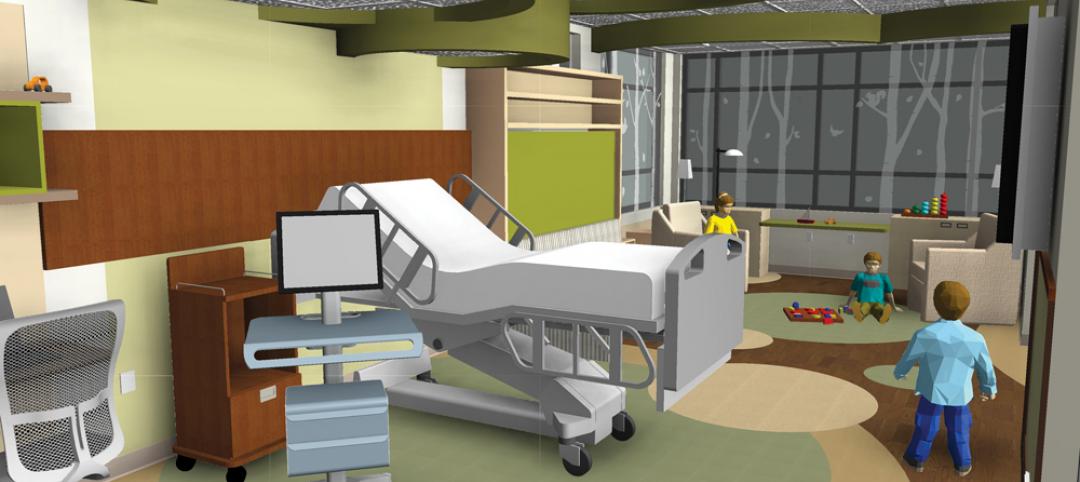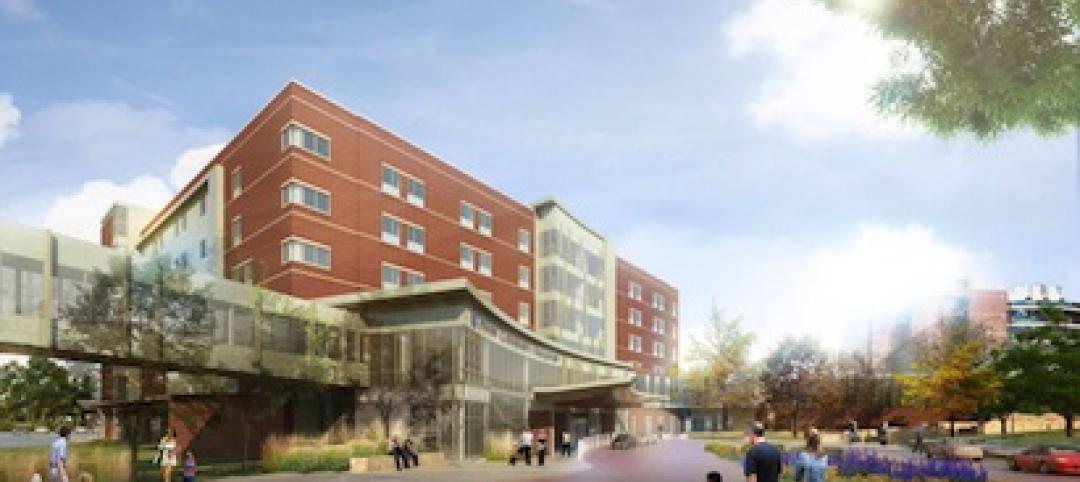Among the 25 cities in the U.S. with the largest homeless populations, the only city in Florida is Miami, with roughly 3,700 homeless, or 8.1 people per 1,000, according to U.S. News and World Report. Local agencies and programs such as Camillus House’s Lazarus Project and the Miami Permanent Supportive Housing Program target individuals suffering from mental illness that experts identify as one of the root causes of homelessness.
A team that included SBLM Architects recently completed the renovation and conversion of a vacant seven-story, 180,000-sf building—which had previously served as a mental health evaluation and treatment center—into the Miami Center for Mental Health and Recovery, whose goal is to divert individuals with serious mental problems from the criminal justice system to a facility where they can receive proper care and treatment, and possibly transition into more stable housing.
The Miami Center is a response to the Baker Act, a Florida law passed in 1971 that enables families and loved ones to provide emergency mental health services and temporary detention for people who are impaired because of their mental illness, and who are unable to determine their needs for treatment.
The revamped, 208-bed Miami Center, which in late December received its Temporary Certificate of Occupancy, is unique in that its first floor, where detainees are processed and evaluated, includes a Hearing Room with judge and magistrate chambers for related hearings and legal proceedings.
SBLM’s design, in fact, was “conceived” by Judge Steven Leifman, Associate Administrative Judge in the criminal division of Florida’s 11th Circuit Court. “The judge has been the driving force behind this,” confirms Jim Cohen, a Vice President with Miami-based SBLM Architects, who spoke with BD+C yesterday. Judge Leifman was also instrumental is raising funds for this Center.
Bureaucratic snags delay development
Cohen recounts that the “mental health diversion” concept emerged in 2010 after an expose in the mid 2000s revealed that Miami-Dade County's Correctional Department wasn’t equipped to provide the care needed by mentally ill inmates.
At first, the plan was to use only a couple of floors in the building, which was built in 1980. That morphed into a design-build project that at one point had Johnson Controls offering to pay for the entire renovation if its systems were installed. (The county declined that offer.)
The county hired SBLM in 2015, and Cohen says now that the building provided the “backbone and space to realize the judge’s vision.” The building team on this $52 million renovation project included Thornton Construction Company (GC), Bliss & Nyitray (SE) TWR Engineers (MEP), and TLC Engineering for Architecture (technology).
A continuum of care

After the intake and evaluation processes, an individual is moved into Crisis Stabilization Unit on the second floor with 16 beds, outpatient clinics, 15 offices for support services, and a conference center for professional and educational training (including law enforcement training specifically for this population). The second floor also has a “respite area” for persons who don’t meet the Center’s crisis criteria but have nowhere else to go.
There’s a secure wing on the second floor for residents that includes a gym, a multipurpose day room, visitation areas, and access to a 33,000-sf outdoor recreation space with landscaping, seating, a walking path, and basketball courts.
Mechanical equipment is on the third floor, which also serves as a physical and acoustical buffer from the resident sleeping areas on floors four through six. (The seventh floor hasn’t been built out yet.) Each resident floor has six to eight sleep pods that allow patient care to be segmented. A maximum of five beds per resident floor may be assigned to that floor’s private bathroom.
Resident floors have dedicated support areas for pharmacies, exam rooms, professional therapy offices, laundries, and dining. As a resident’s condition stabilizes, there can be relocations to higher floors that provide independent living opportunities. As such, Miami Center claims to be the first of its kind in the country that offers a continuum of healthcare for the mentally ill that includes the prospect of reintegrating into society.
Treatment instead of detention
The custodial component, says Cohen, can last up to six months. If the patient shows improvement, he or she is eligible for longer-term houisng on floors five and six. At that stage, a patient can opt to leave the program.
The opening of the Miami Center, which will cost $30 million per year to run, is projected to save Miami-Dade County $100,000 per person annually by providing treatment programs to mentally ill people who otherwise would be held for extended periods in county detention facilities. Cohen says he’s been contacted by the city of Seattle about Miami-Dade’s diversion efforts, and notes that Judge Leifman has toured the facility with representatives from other cities.
Cohen adds that the first floor of the building includes a commercial kitchen that, once operational, could provide patients with training applicable to the food service industry.
Related Stories
| Nov 19, 2013
Pediatric design in an adult hospital setting
Freestanding pediatric facilities have operational and physical characteristics that differ from those of adult facilities.
| Nov 19, 2013
Top 10 green building products for 2014
Assa Abloy's power-over-ethernet access-control locks and Schüco's retrofit façade system are among the products to make BuildingGreen Inc.'s annual Top-10 Green Building Products list.
| Nov 18, 2013
6 checkpoints when designing a pediatric healthcare unit
As more time and money is devoted to neonatal and pediatric research, evidence-based design is playing an increasingly crucial role in the development of healthcare facilities for children. Here are six important factors AEC firms should consider when designing pediatric healthcare facilities.
| Nov 15, 2013
Greenbuild 2013 Report - BD+C Exclusive
The BD+C editorial team brings you this special report on the latest green building trends across nine key market sectors.
| Nov 15, 2013
Pedia-Pod: A state-of-the-art pediatric building module
This demonstration pediatric treatment building module is “kid-friendly,” offering a unique and cheerful environment where a child can feel most comfortable.
| Nov 14, 2013
Behind the build: BD+C's 'Pedia-Pod' modular pediatric patient unit at Greenbuild 2013 [slideshow]
Next week at Greenbuild, BD+C will unveil its demonstration pediatric patient unit, called Pedia-Pod. Here's a behind-the-scenes look at the construction of this unique modular structure.
| Nov 13, 2013
Installed capacity of geothermal heat pumps to grow by 150% by 2020, says study
The worldwide installed capacity of GHP systems will reach 127.4 gigawatts-thermal over the next seven years, growth of nearly 150%, according to a recent report from Navigant Research.
| Nov 8, 2013
Oversized healthcare: How did we get here and how do we right-size?
Healthcare facilities, especially our nation's hospitals, have steadily become larger over the past couple of decades. The growth has occurred despite stabilization, and in some markets, a decline in inpatient utilization.
| Nov 1, 2013
CBRE Group enhances healthcare platform with acquisition of KLMK Group
CBRE Group, Inc. (NYSE:CBG) today announced that it has acquired KLMK Group, a leading provider of facility consulting, project advisory and facility activation solutions to the healthcare industry.
| Oct 30, 2013
15 stellar historic preservation, adaptive reuse, and renovation projects
The winners of the 2013 Reconstruction Awards showcase the best work of distinguished Building Teams, encompassing historic preservation, adaptive reuse, and renovations and additions.

















